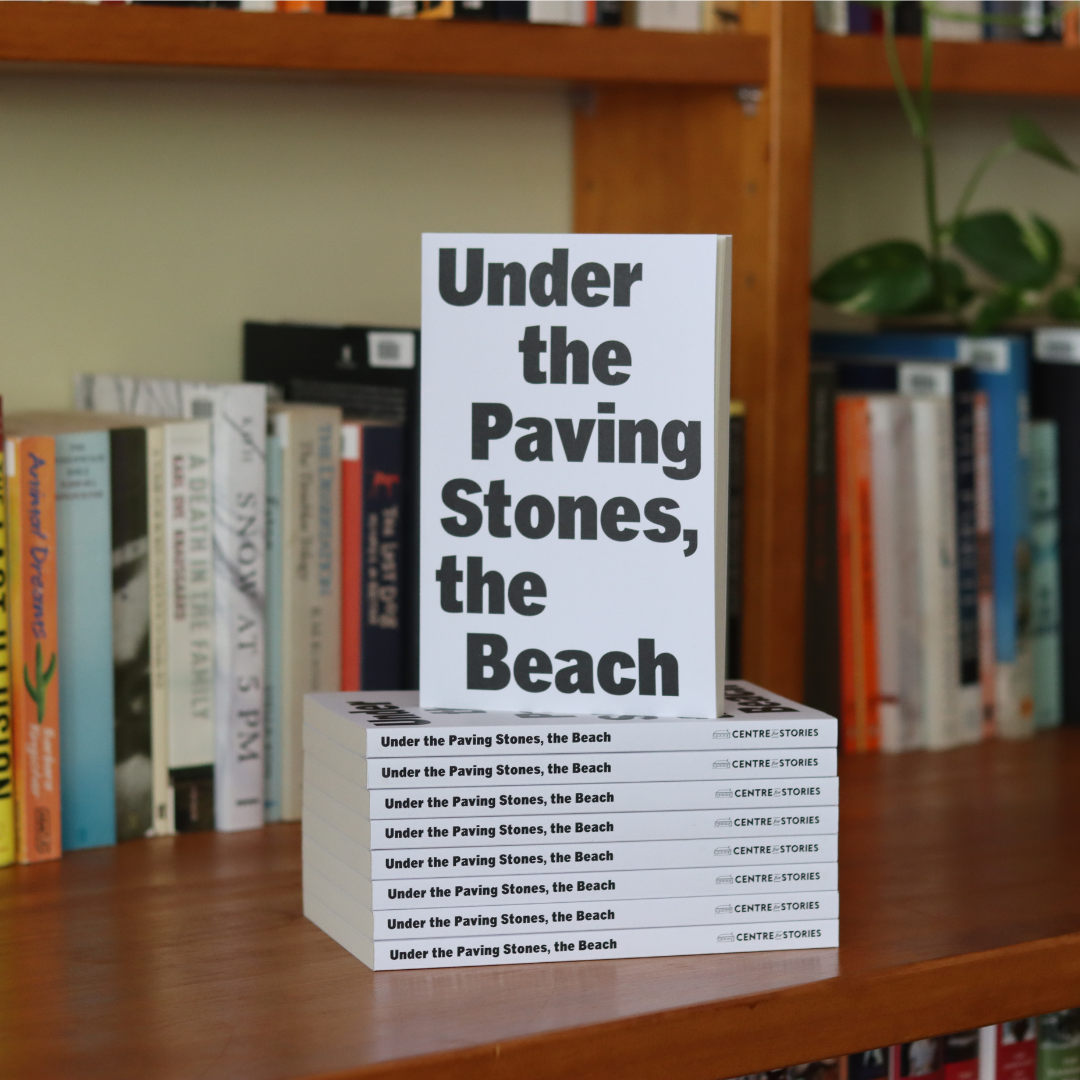Words by Cleo Robins
If there’s one thing that the Centre for Stories does exceedingly well, it’s assembling some of Perth’s finest literary talent into a cohesive yet myriad whole. This is exactly what the organisation has done in its latest publication, Under the Paving Stones, the Beach, a collection of poetry, non-fiction, and narrative prose.
For any Pelican readers who are unacquainted, the Centre for Stories is a local arts and culture organisation that promotes storytelling in all its forms by facilitating literary events and supporting local writers. A key part of the Centre for Stories’ mission is the ‘Writing Change, Writing Inclusion’ program, a mentorship program that offers support to “emerging and established writers from culturally and linguistically diverse and/or First Nations backgrounds”. Under the Paving Stones, the Beach highlights the work of several participants of the program, all of whom push the boundaries of form in surprising and affecting ways.
A great indication of the innovative spirit which runs throughout the collection can be found in the poetry section, which opens with the work of Vuma Phiri. All of Phiri’s poems play with the traditional placement of words on the page by separating phrases over lines and throughout space, constantly upending the reader’s expectations. This tendency makes the solid column of text in her poem “Namesake” all the more striking, especially considering the piece’s key themes of family bonds and lineage. Daley Rangi’s “Trick or Treaty” is another poem that exhibits a thoughtful use of blank space, with words arranged in the shape of leaping flames to embody the piece’s exploration of loss and sovereignty.
Under the Paving Stones, the Beach has a marked interest in heritage and rebirth that is continued throughout the non-fiction section, most notably with Saadia Ahmed’s “The taste of apples.” Ahmed’s memoir is a poignant reflection on the sacrifices passed down from parents to children. Her narration manages to tread the careful balance between emulation of her naïve and joy-filled childhood and the retrospective understanding she has gained from her later years.
The fiction section is the largest and most diverse component of the collection in terms of both form and content. The pieces range from surreal, dystopian works to magical realism, all the way through to gritty stories of day-to-day life. Additionally, the fiction writers have not limited themselves to writing prose either; one notable piece is Luisa Mitchell’s “The Maw and the Martuwarra”, an extract from a fantasy feature film screenplay that tells the story of a town divided by the development of a gas hub on Indigenous Country.
Because it showcases multiple forms and storytellers, Under the Paving Stones, the Beach has something for readers of every inclination. If you’re looking to be entertained, moved, forced to think, or even to laugh, pick up a copy from the Centre for Stories as soon as you can! After all, just as the pieces of the collection constantly remind us, stories are vital, stories are community, and stories are our shared heritage.

